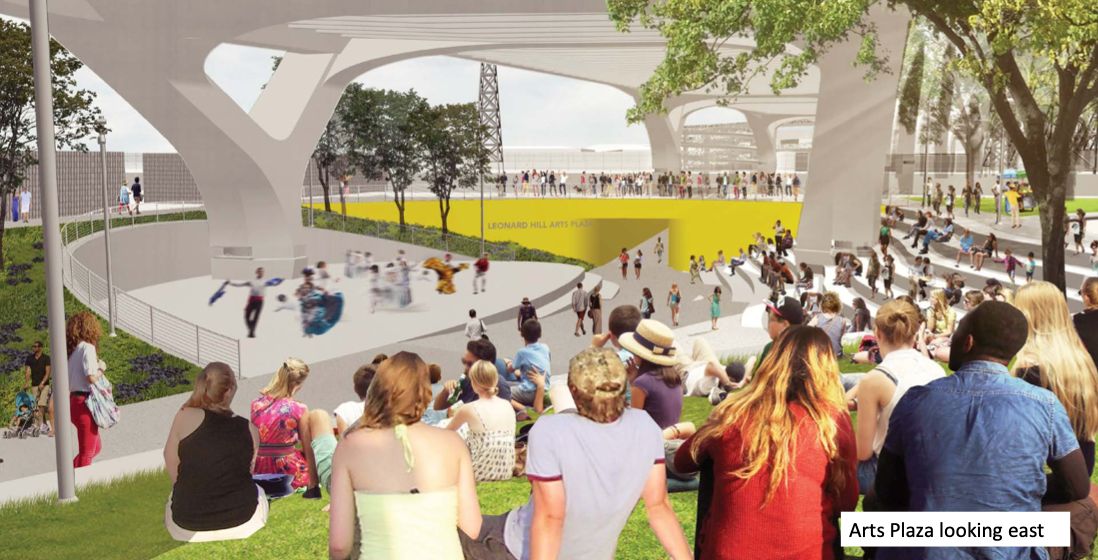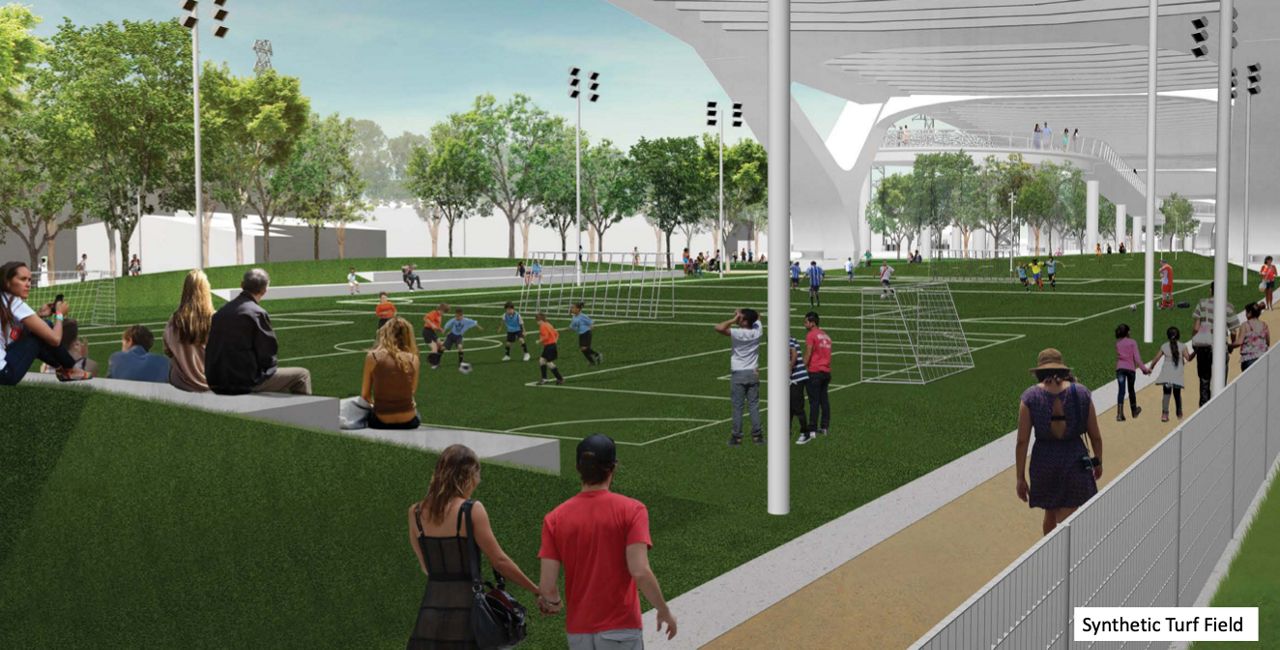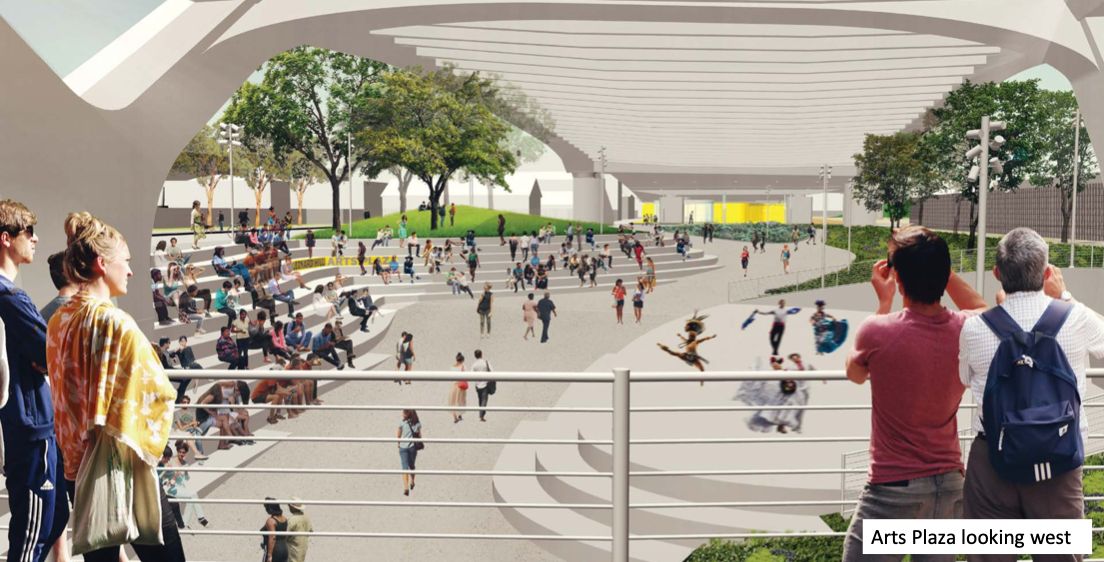BOYLE HEIGHTS, Calif. — The eastside neighborhood of LA has just a half acre of green space for every 1,000 residents, but that will change in 2024, when the city completes construction of a new 12-acre park that will span both sides of the new 6th Street Bridge connecting Boyle Heights with the Arts District in downtown LA.
The new green space will include dog parks in both neighborhoods, a skate park, restrooms, a playground, a splash pad, an urban forest, a flexible sports court for basketball and other events, a pair of flexible playing fields for soccer and a plaza for public art and performances.
“Whether you live in Boyle Heights or Brentwood, whether you live in Highland Park or Hancock Park, in Watts or Woodland Hills, everyone deserves clean, safe, well-maintained parks to enjoy,” LA City Councilmember Kevin de Leon said Thursday in Boyle Heights, where he announced millions of dollars in state funding for parks in some of the city’s most underserved communities.
“We don’t all have the financial wherewithal to go to REI and buy a Thule cargo box and get in an Audi to drive five hours to enjoy pristine open space,” he said. “Why can’t we have it here in LA?”
De Leon represents Council District 14, which will receive a total of $17 million in grants resulting from a bill he authored while serving as leader of the California Senate. Senate Bill 5, also known as the California Drought, Water, Parks, Climate, Coastal Protection and Outdoor for All Act, resulted in the Prop 68 ballot initiative voters passed in 2018.
More than $650 million of the $4.1 billion Prop 68 provides is allocated to the Statewide Park Development and Community Revitalization Program that is helping fund parks and green space in disadvantaged areas, including Los Angeles.

LA ranks 71st in the nation when it comes to park access, investment, acreage, amenities and equity, according to the Trust for Public Land’s 2021 ParkScore. That report found that just 64% of LA residents live within a ten-minute walk of a park. Residents in neighborhoods of color had 13% less access to park space per person than the city median and 66% less than residents in white neighborhoods.
“We recognized how parks in our neighborhoods were run down. They were overcrowded, and quite frankly they simply didn’t exist like in many other neighborhoods throughout the city of LA,” de Leon said of his reason for authoring the bill that led to Prop 68 and will help rehabilitate parks that lack resources and create new park space.
Four of the seven LA parks that are receiving Prop 68 grants are in de Leon’s district, which includes the neighborhoods of Boyle Heights, downtown and parts of Northeast LA and is criss-crossed by nine major freeways. A park on Matthews Street in Boyle Heights broke ground in September.

Hazard Park in Boyle Heights will be rehabilitated with $8.27 million, allowing it to add a soccer field, outdoor restrooms, dog park, splash pad, fitness equipment, outdoor performance plaza, renovated baseball fields and four new playgrounds, as well as public art honoring East LA leaders.
The new 6th Street Bridge Park will get $8.5 million to build a sprawling and multifaceted new park on both sides of the LA River once construction on the bridge itself is completed next summer.

Over the past eight years, the city of LA has built 37 new parks, according to LA’s Department of Recreation and Parks. Still, a 2016 Los Angeles Countywide Comprehensive Parks and Recreation needs assessment found that half of LA County is park poor, and that 82% of areas lacking green space were in communities of color.
“We do lack park access here in Los Angeles,” said LA Department of Recreation and Parks General Manager Mike Shull. “We have to make the most of our existing parks. We have to keep our foot on the pedal for expanding our parks. Our existing parks play a vital role in expanding the availability to our youth.”
At Hazard Park, he said, that means adding lighting when it installs the new soccer field so it can be used at times of year when it gets dark early. The new amenities at Hazard Park were decided in partnership with community leaders, just as they were for the new 6th Street Bridge Park.
“It wasn’t designed by city employees sitting in an office,” said Mary Nemick, communications director for the LA Public Works Department. “We spent almost three years working directly with the community, holding meetings and design workshops, taking tours and asking people what they would like to see in the park. This is the design the local neighborhoods came up with.”



